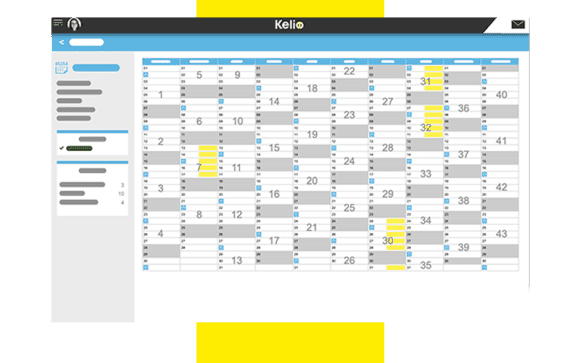
Key Benefits of Implementing a Time and Attendance System
In today’s fast-paced business environment, managing time and attendance effectively is crucial for any organisation. Implementing a robust time and attendance system can bring a multitude of benefits that go beyond just tracking hours. Here are 11 tangible benefits that can transform your workplace:
1. Enhanced Accuracy
Manual time tracking is prone to errors, which can lead to payroll discrepancies. A good time and attendance system ensures precise tracking of employee hours, reducing the risk of costly mistakes. For example, an automated system will accurately log the exact time an employee clocks in and out, eliminating the possibility of human error. This precision is particularly important in industries where employees work varying shifts and overtime, ensuring that every minute worked is accounted for correctly.
2. Increased Productivity
Automating time and attendance processes frees up valuable time for HR and management. This allows them to focus on more strategic tasks, ultimately boosting overall productivity. For instance, instead of spending hours manually calculating payroll, HR can use that time to develop employee engagement programmes or improve recruitment processes. Additionally, managers can quickly access attendance reports to identify and address any issues, such as frequent lateness or absence, without sifting through piles of paperwork.

3. Cost Savings
By eliminating time theft and reducing administrative overhead, a quality system can lead to significant cost savings. Accurate time tracking ensures that employees are paid correctly for the hours they work, preventing overpayments. For example, a company that previously relied on manual time sheets might find that automating the process saves thousands of pounds annually. Furthermore, reducing the time spent on administrative tasks means that HR staff can focus on more value-added activities, contributing to the overall efficiency and profitability of the organisation.
4. Improved Compliance
Staying compliant with labour laws and regulations is essential. A reliable time and attendance system helps ensure that your organisation adheres to legal requirements, avoiding potential fines and legal issues. For example, the system can automatically calculate overtime according to local laws, ensuring compliance without manual intervention, or ensure Working Time Directive adherence. This is particularly important in industries with strict labour regulations, such as healthcare and manufacturing, where non-compliance can result in hefty fines and damage to the company’s reputation.
5. Better Workforce Management
With real-time data on employee attendance, managers can make informed decisions about scheduling, overtime, and workforce allocation. This leads to more efficient use of resources and better overall management. For instance, if a manager notices a pattern of absenteeism in a particular department, they can investigate and address the issue promptly. Additionally, real-time data allows for more flexible scheduling, ensuring that the right number of employees are available during peak times, which can improve customer service and operational efficiency.

6. Enhanced Employee Accountability
A transparent system promotes accountability among employees. When everyone knows their hours are being accurately tracked, it encourages punctuality and reduces instances of lateness and absenteeism. For example, a retail store might see a decrease in late arrivals once employees know their clock-in times are being monitored. This accountability can also extend to managers, who can use the data to ensure fair and consistent enforcement of attendance policies, fostering a culture of trust and responsibility.
7. Streamlined Payroll Processing
Integrating time and attendance data with payroll systems simplifies the payroll process. This reduces the time and effort required to process payroll, minimising errors and ensuring timely payments. For example, a manufacturing company can seamlessly transfer attendance data to their payroll software, reducing the payroll processing time from days to hours. This integration also helps in maintaining accurate records for audits and financial reporting, ensuring that the organisation’s financial data is always up-to-date and reliable.
8. Improved Employee Satisfaction
Employees appreciate accurate and timely pay. A good system ensures that they are compensated correctly for their work, leading to higher job satisfaction and morale. For instance, an employee who consistently works overtime will feel valued when their extra hours are accurately recorded and compensated. Additionally, having a transparent system in place can reduce disputes over pay and attendance, leading to a more harmonious workplace where employees feel their contributions are recognised and rewarded.
9. Data-Driven Insights
Access to detailed attendance data allows organisations to identify patterns and trends. This information can be used to improve scheduling, identify potential issues, and make data-driven decisions. For example, a company might notice that productivity dips on certain days and adjust staffing levels accordingly. These insights can also help in identifying high-performing employees who consistently demonstrate good attendance, providing opportunities for recognition and career development.

10. Scalability
As your organisation grows, a robust time and attendance system can scale with you. It can handle an increasing number of employees and adapt to changing business needs without compromising on accuracy or efficiency. For instance, a small business that expands into multiple locations can easily integrate new employees into the existing system. This scalability ensures that the organisation can continue to operate smoothly and efficiently, regardless of its size or complexity.
11. Enhanced Security
Modern time and attendance systems often include biometric verification and secure data storage. This enhances security by preventing unauthorised access and ensuring that sensitive employee information is protected. For example, a healthcare facility might use fingerprint scanning to ensure that only authorised personnel can access certain areas. This level of security not only protects the organisation from potential breaches but also ensures that employees’ personal information is kept confidential and secure.
Conclusion
Implementing a quality time and attendance system is more than just a technological upgrade; it’s a strategic move that can lead to numerous tangible benefits. From cost savings and improved compliance to enhanced employee satisfaction and data-driven insights, the advantages are clear. Investing in a robust system can transform your workplace, making it more efficient, productive, and secure.

